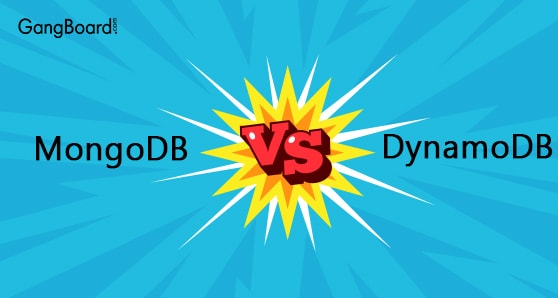
MongoDB Vs DynamoDB
MongoDB Vs DynamoDB
What is MongoDB?
MongoDB is a NoSQL database with document orientation. It is used when high volumes of data are to be stored. Every database includes groups which in turn hold files. Every single file can be dissimilar with a changing amount of fields. The content and size of every document can be dissimilar to each other. Document organization is aligned with how classes plus objects are made by developers in the programming languages of their choice.
Developers will frequently interpret about classes not using rows-columns but a clear construct of key-value type. Data model accessible with MongoDB permits you to characterize hierarchical associations; it helps in storing arrays along with many more composite assemblies easily. It provides a lot of features. Some of the important features are listed below.
Features of MongoDB
Framework:
MongoDB offers aggregation framework for its usage in a well-organized fashion. MapReduce is used for batch operations of aggregation processes and data. MapReduce provides an associated application for processing as well as producing large data sets by using parallel and distributed algorithms.
Horizontal Scalability:
One of the key features of this application is sharding. It is useful for the distribution of data on many machines. It provides high throughput actions and makes it likely to offer parallel scalability. Horizontal scaling is a complex process and is achieved by using numerous machines also called shards.
All shards have a share of the data along with methods or functions as a distinct database. The group of numerous shards organized forms a single rational database. The processes are implemented through query routers and App server with configuration servers. They help in deciding which operation should be routed to a specific shard.
Queries:
MongoDB provides queries of field and range type, regular expression explorations, etc. Queries can yield definite fields of files and comprise user-defined functions of JavaScript. It enables support of ad hoc queries with indexing of BSON files by the use of distinctive query language.
What is DynamoDB?
DynamoDB is a trademarked NoSQL archive facility assembled by Amazon and accessible as part of the AWS or Amazon Web Services collection. With this facility, you can generate database tables to store and recover any volume of data, in addition to serving any kind of request circulation.
You can scale tables up down throughput capability without stoppage or performance deprivation, and use the AWS Organization Console to display resource consumption and performance units. You can produce on-demand holdups as well as allow point-in-time retrieval for your tables.
Point-in-time retrieval helps defend Amazon DynamoDB record tables from unintentional write or remove actions. By means of point-in-time retrieval, you can bring back that specific table to some point in time for the period of latest 35 days. The following are some important features of DynamoDB.
Feature of DynamoDB
Predictable Performance:
It offers predictable performance. You can also handle the excellence of service you are going to get by using options like powerful and ultimate reliability. You can use API calls to increase or decrease the components related to read and write options.
Scalable:
You can scale it according to your needs. Using model of automatic partitioning you can spread it radically. And you don’t need a user interface for this.
Support of Data Types:
It supports scalar, document and multi-valued data types. They include numbers, strings, binary, null, Boolean, binary-number-string set, lists plus maps.
Support for Index:
It supports global secondary and local secondary index. It requires range and hash key for these types. And these keys are used in partitioning then.
Difference between MongoDB and DynamoDB
Feature |
MongoDB |
DynamoDB |
|
Indexing facility |
Unique, compound, array, TTL etc. |
Only hash and hash-range index |
|
Query |
Keys, graphs, ranges etc. |
Key-value type |
|
Maximum record size |
16 MB |
400 KB |
|
Data type used |
Advanced and almost all data types of JSON are used. |
Limited number of data types. |
|
Deployment |
It can be deployed on Azure, AWS and many other platfroms. |
It is deployed as service on AWS. |
|
Schema |
Native schema |
No schema |
|
ACID properties |
Applied to backups, index and documents too |
Apply only to data of tables |
|
Structure of database |
It uses documents of JSON type that don’t need a specific structure. |
It uses items, tables, attributes, keys etc. |
|
Programming Language |
It was written using C++. |
It was writing using Java. |
|
Replication available |
Single-master |
Cross-region |
|
Community support |
MongoDB, Inc. provides all the support. |
Amazon offers all the support. |
|
Documentation |
MongoDB, Inc. sustains the documentation. |
Amazon keeps up the documentation. |
| For beginners |
MongoDB community provides with webinars and events etc. |
DynamoDB community provides with samples and other tools. |


 +1 201-949-7520
+1 201-949-7520 +91-9707 240 250
+91-9707 240 250